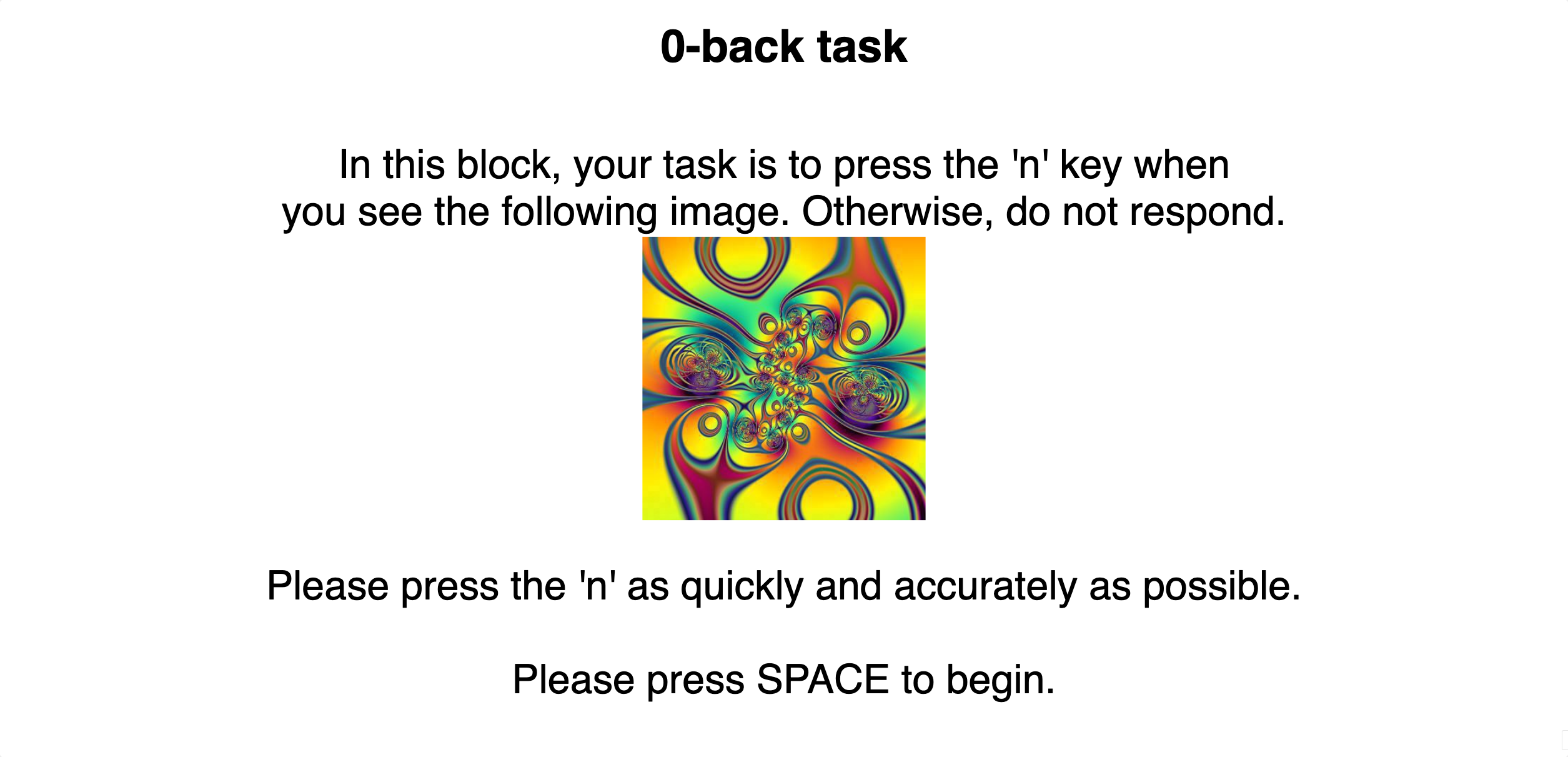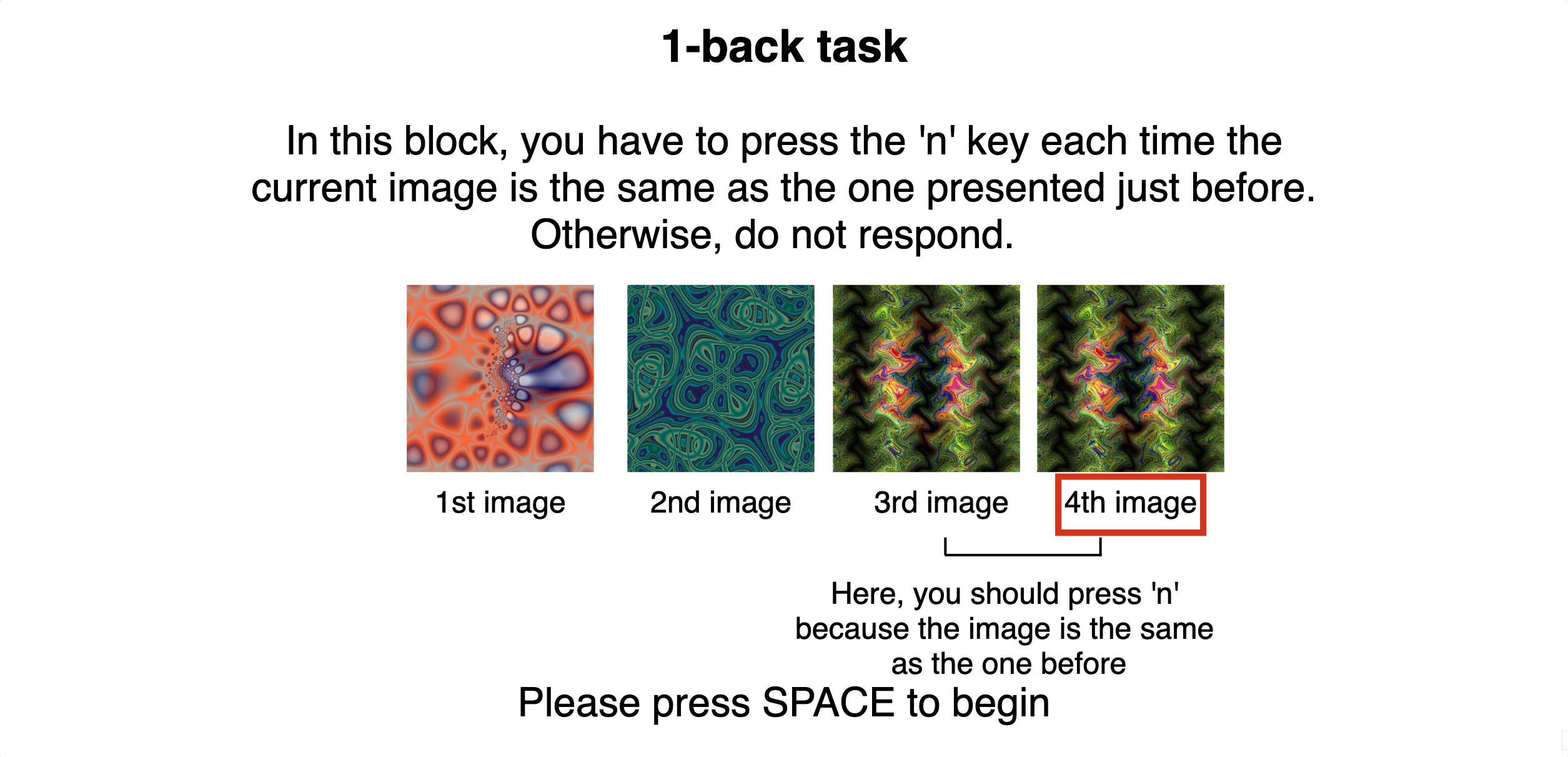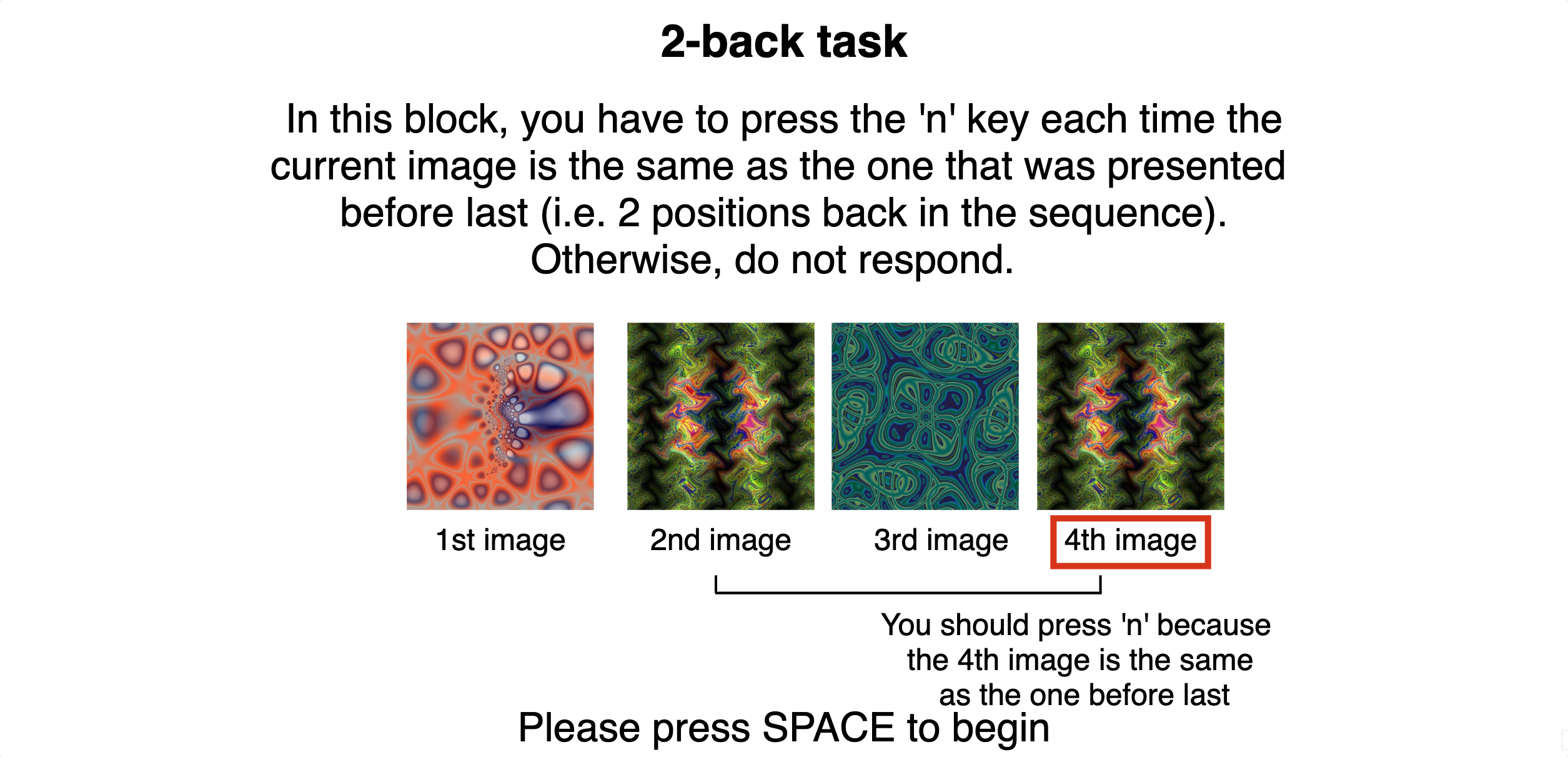N-Back task (fractals)¶
Received as a courtesy of Rissman’s lab.
Abstract¶
Reference¶
Unpublished. Inspired by fractal N-Back studies (e.g. [Ragland et al., 2002]).
Description¶
Classic N-Back task; participants are presented with fractal images and in three different difficulties have to either react to a given image (0-back) or answer if the present stimuli appeared in the previous trial (1-back) or the one before previous (2-back) respectively. Measures working memory capacity and attention. For general reference see for example [Kane et al., 2007] or [Jaeggi et al., 2010].
Fractals were chosen as the stimuli instead of other stimuli, such as letters, to avoid subjects using a sub-vocal strategy for working memory maintenance ([Juvina, 2007]). The 20 fractal stimuli in this experiment were generated and chosen by Ragland and colleagues ( [Ragland et al., 2002]) during their stimuli development procedure because the images were difficult to name and were used in this study with permission. The 2-back working memory task required subjects to indicate a target response if the current fractal stimulus was the same as the fractal stimulus presented two items previously. 1-back and 3-back lures were included where the fractal stimuli were the same as the fractal stimulus presented one item or three items back, respectively. The working memory task blocks had an average of four 2-back hits, one 1-back lure, and two 3-back lures.
Examples¶



